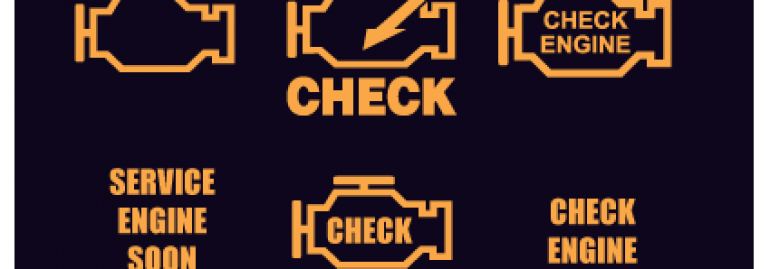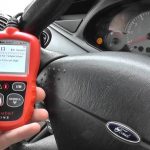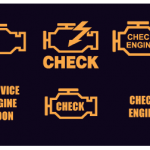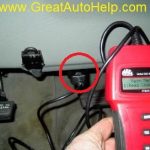A vehicle’s on-board computer stores a database of common problems in the form of automotive codes. The microcontroller in your car uses this memory to store the error code. Once you encounter an error, you can retrieve the error code from the memory of the microcontroller. This article will discuss the meaning of these codes. Having an understanding of the meaning of these codes will help you make the best diagnosis possible for your vehicle. Getting started with automotive codes is easy.
OBD is a self-diagnosis system
In the early 1990s, an automaker began using an onboard diagnostics (OBD) system in their vehicles. These systems monitor and record a vehicle’s health and record specific problems in the form of standardized diagnostic trouble codes. Drivers and mechanics alike must learn to interpret these codes. There are two major types of OBD codes: DTC and P0201. The first is a warning code that indicates a system malfunction. The second type of code is an error code. Both are useful when they indicate a problem and are a signal to a mechanic.
Before being standardized, manufacturers developed their own systems. The first systems used different connector types and electronic interface requirements. They also had custom codes that reported problems. Eventually, the standardization process started in the late 1970s. Volkswagen introduced the first computerized system and the first self-diagnosis system, while Datsun began using an OBD system in 1978. The Society of Automotive Engineers (SAE) recommended a standardized connector and diagnostic test signals in 1979. GM followed suit in 1980, introducing their own proprietary interface and protocol.
The acronym OBD stands for On-Board Diagnostics. OBD II is the second generation of OBD self-diagnosis systems for cars. It incorporates the capabilities of the on-board computer and checks the functions of almost every component in a vehicle. When one of these components isn’t working correctly, the OBD II system illuminates a warning light. This warning light will show the word “Check Engine” or another engine symbol.
OBD fault codes are generally composed of five characters. Each character refers to a specific component of the car, such as the engine or transmission. If the code is “9”, then the problem is in the transmission. In case of “8,” it is related to a sensor failure. A vehicle may have more than three thousand generic codes. If your vehicle is equipped with an OBD tool, you can search online and read explanations of each code.
Diagnostic trouble codes (DTCs) are generated by the vehicle’s on-board computer
A DTC is an abbreviation for Diagnostic Trouble Codes. These codes are generated by the vehicle’s on-board computer to indicate an issue with a particular part of the vehicle. There are several different DTCs and each of them means something different. You can usually understand one by going through its digits one at a time. Some codes are related to the powertrain, while others are related to the chassis, suspension, or braking systems. Other codes may have different meanings and require further testing.
Using your diagnostic software, you can determine which DTCs are causing your check engine light to come on. You can also consult your vehicle’s manufacturer or a car dealer for more information about the problem. DTCs are usually displayed as warning lights on the dashboard. The reason for this is that they are generated by the on-board computer, which is a complex piece of equipment.
A DTC contains five main components. They are: The suspect parameter number (SPN) is the SPN with an error. Each SPN is used in a DTC. The failure mode identifier (FMI) refers to the nature of the error and can be anything from a sensor short-circuit to a calibration error. Another component of the DTC is the SPN Conversion Method, which specifies the way a DTC is formatted and used in a DTC. A DTC may also contain “0” or any other byte alignment.
Once you’ve located a DTC, it’s time to check it. Your vehicle’s service manual will provide you with an in-depth explanation of each fault code. You can even read the manual to clarify any ambiguity or to diagnose the problem. Sometimes, DTCs are simply a symptom of a long-ago fault.
Symptoms of malfunctions are stored in memory
Error codes are not universal, but many automakers use the same codes for the same malfunctions. One such code is P0420, which indicates a catalytic converter malfunction in a vehicle. However, there are some differences. Some codes are stored, while others are pending. Whether the codes are stored or pending, the main goal is to ensure that the vehicle knows what to do in case of a malfunction.
A scan tool can help detect fault codes. These codes are stored in non-volatile memory, and they remain intact even if the battery is disconnected. However, removing the battery may cause a loss of the computer’s learned memory and electronic presets. This could result in an unresponsive engine. This is why it is best to always keep the battery in your vehicle when you are diagnosing malfunctions with your car.
Meaning of each code
In order to understand how your vehicle’s trouble codes work, it helps to understand how each letter is used. A P stands for powertrain, which covers the engine, transmission, and associated accessories. A U stands for network and vehicle integration, which relates to the onboard computer systems of the car. The final letter, C, stands for chassis, which covers the mechanical systems of the car. The meaning of each automotive code is not the same for every type of car, so if you are not sure which one to look for, don’t worry – we will explain.
The acronym OBD stands for On-Board Diagnostic, and all modern vehicles have an OBD-II system. This system is designed to check for malfunctions and send trouble codes to the diagnostic computer. The OBD codes, which are also known as trouble codes, are five-character sequences, which provide different information about the vehicle’s problem. You shouldn’t try to decipher the meaning of an automotive code on your own unless you’re familiar with the car’s systems. If you don’t understand the code, it may be a sign of more serious problems.
A diagnostic trouble code (DTC) is a series of numbers and letters that indicates a malfunction in a specific system. For example, a P0442 code indicates that a leak is present in the evaporative emission system. Modern vehicles may generate hundreds of DTCs. If you’re unsure of what a code means, consult your vehicle’s manual or vehicle manufacturer’s website for more information.
Getting code definitions
The first step to getting automotive code definitions is to purchase a diagnostic connector. A basic code reader will only provide a five-character DTC code and may not include a code definition. A more comprehensive code reader will provide a complete code definition, and may even include the vehicle’s manufacturer’s website as well as a standard DTC list. The basic code reader plugs into the 16-pin OBD-II diagnostic connector found on the left side of the steering column. Older vehicles require a specific adapter.
Typically, these codes come in two categories: generic and manufacturer-specific. Generic codes are required for emission diagnosis, while enhanced codes relate to additional features of the vehicle. Most vehicles, including those made after 1996, support the selection of OBD2 codes. Diagnostic trouble codes are stored in the on-board computer management system, which turns on warning lights whenever there’s a problem. Code definitions can help you identify which problem is causing your car to stop performing as it should.
The first category of codes includes generic and manufacturer-specific ones. Global codes cover functions inside and outside the passenger compartment, such as the braking system. Manufacturer-specific codes, on the other hand, apply to the engine, transmission, and drivetrain. Each code is followed by a letter, and the first digit is the manufacturer’s code. The second category includes codes used for auxiliary emissions, engine and transmission, and shared computer systems.
When looking for codes, always refer to the manufacturer’s website. A DTC will include an abbreviation, as well as a brief description of the problem. In some cases, codes are only two or three characters long. It is important to know how each character is coded and what the abbreviations mean. Obtaining automotive code definitions is essential for fleet management. It helps you get a better understanding of how to diagnose a problem in your vehicle.





